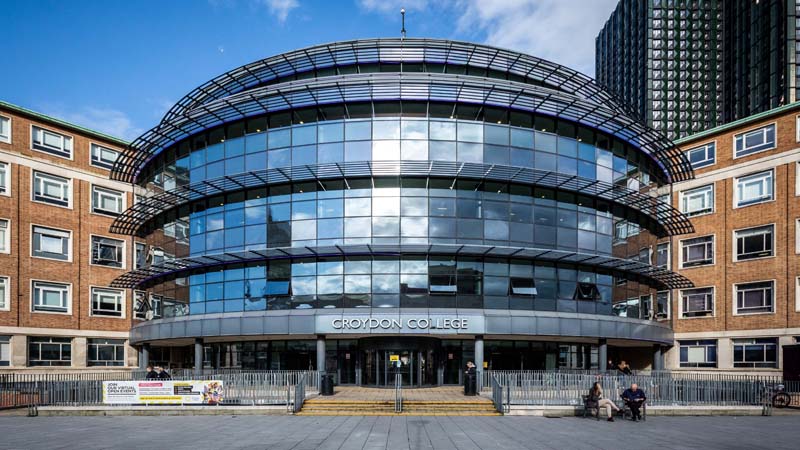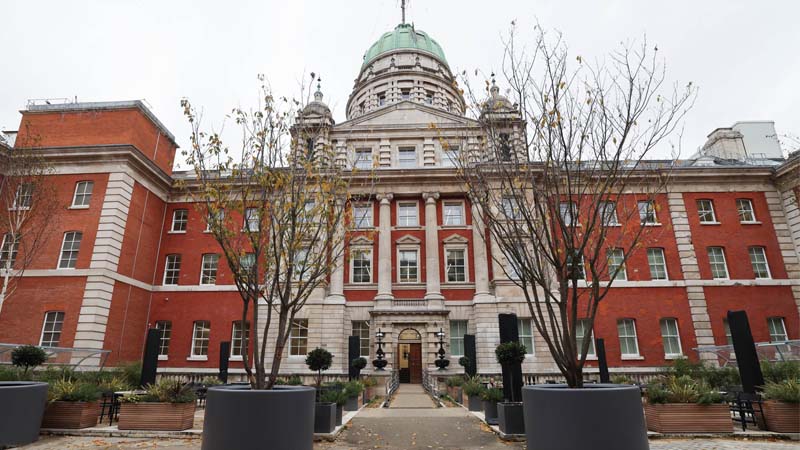Cut your IT related energy costs with Converge

There can be a lot to consider when it comes to IT upgrades for your organisation. Your business goals, user needs, scalability and data migration are just some of the things you need to think about. Another increasingly important factor is energy usage, and for good reason.
In 2025 electricity prices are 2.5x higher than they were in 2015 and when you combine that with other financial burdens on business and a sluggish economy it’s never been more important to consider the energy efficiency of your IT systems. In the long term, a little more thought now could save you a packet.
The good news is that you can substantially increase your energy efficiency and the performance of your IT systems while also reducing your carbon footprint.
It’s good to talk
Making the right decisions about IT upgrades starts with where you are now. Talking to an expert who will ask the key questions can save you a lot of time and money further down the road. Things to consider include:
- What are your current pain points in your IT infrastructure?
- What are your objectives in terms of business growth or changes?
- Do you need on site servers or is the cloud or NAS an option?
At Converge, we’ve worked with thousands of organisations on IT upgrades and it’s anything but a one-size-fits all game. Every organisation has unique needs and it’s often the case that big efficiency savings and easily scalable solutions are there for the taking - with the right advice.
It’s about configuring your kit to maximise both performance and energy efficiency. For example, does you organisation need a volume of efficient workstations on every desk and what does ‘efficient’ look like? How much processing power is needed, and can it be reallocated elsewhere when it’s not needed?
These are questions we help customers resolve day in day out at Converge.
Time to join the in-cloud?
The benefits of cloud computing are many, not least in reducing overall energy usage for IT tasks. Cloud providers use virtualisation to run multiple applications on fewer servers. In effect, reducing the number of machines needed and therefore reducing energy usage.
Let’s take the example of a school on a tight IT budget. Do they really need an onsite physical server? Cloud storage or a NAS box (a data storage device that connects to and is accessed through a network) could save space, upfront costs and a lot of future energy usage because those energy thirsty servers are no longer needed on site.
One of the challenges to this argument is often that data centres that host ‘the cloud’ use a lot of energy, so aren’t you simply outsourcing your carbon emissions? While traditional data centres can be very energy intensive, major cloud providers have invested in energy-efficient infrastructure, including advanced cooling systems, renewable energy sources, and optimised hardware to reduce power consumption. Many also use AI to effectively predict and to scale energy usage up and down based on likely demand.
There are two big reasons why cloud computing helps reduce energy usage:
- Shared infrastructure - Cloud computing allows multiple organisations to share the same physical infrastructure, reducing the need for each to maintain their own often inefficient or underutilised servers.
- Fewer devices are needed - if cloud computing didn’t exist think how many additional machines would be needed to deliver the same processing power! Manufacturing new IT is carbon and resource intensive and cloud computing reduces demand for new machines.
So, cloud computing can reduce your organisations energy bills and the country’s energy usage more generally.

Virtualisation and consolidation
First, some jargon busting! Traditionally, organisations have run each application on a separate physical server. With virtualisation multiple virtual machines (VMs) run on a single physical server, sharing their resources more efficiently. So, fewer physical servers mean less power consumption per workload.
Server consolidation means just that. Why have multiple, often under-used servers when you can have fewer, higher performing ones handling the overall workload more efficiently? Less is more! Again, this equates to lower energy usage and savings for you.
You may be wondering if this is a same as cloud computing? Not quite!
Virtualization is a technology, while cloud computing is a service model that often relies on virtualization. Virtualisation might involve a single server running Windows VM, Linux VM simultaneously whereas with cloud computing you may rent cloud-based virtual machines instead of buying physical servers.
What matters is that both cloud and virtualisation approaches can substantially reduce your energy usage.
Need advice on the best options for your organisation? Talk to an expert at Converge.
So, there’s some theory, but what could this mean in practice?
Let’s take 70 high powered workstations using lots of power and putting out plenty of heat! Virtualising that power intensive work into 1x rackmount workstation or server means you could use 70x Mini-PCs such as a NUC for the physical workstations. This has the potential to reduce energy consumption 50% - 66%.
Power draw for 70x full featured RTX4070 Workstations could look like this:
- Working on being powered on for 8 hours running heavy to Max load – circa 584W per system.
- 584W X 3.142 = 1834.92 BTU.
- X 70 = 128,444.96 BTU.
The exact figures depend on what you pay for electricity but at £0.25 per KWH (around the UK average in 2025) each system at 8 hours per day would be circa £363 per year. This would be circa £26,559 per year for all 70 machines total. Plus, any air conditioning costs.
More energy efficient power supplies
One of the keys to more energy efficient power supplies lies with 80 PLUS Certification. This ensures that a power supply unit (PSU) is at least 80% energy efficient, meaning it wastes no more than 20% of power as heat. The higher the efficiency the lower your energy costs, but you still need to make a call on the overall energy usage that’s right for you, which us why talking with an expert is well worth the time.
Additionally, power saving modes on devices (e.g. sleep mode or auto-shutdown), when appropriately applied can lead to substantial savings on energy over time. The use of dynamic voltage and frequency scaling (DVFS) to adjust CPU power consumption, meaning that power is adjusted, providing energy when it’s needed and saving power when it isn’t.
Energy efficient hardware
In the past, the energy consumption of CPUs and GPUs was constant, regardless of workload but modern processing units can use both low power architectures and dynamic voltage scaling to adjust power consumption based on workload.
Another factor in energy saving is Solid State Drives (SSDs). This is a type of storage device that uses flash memory to store data. Unlike traditional Hard Disk Drives (HDDs), SSDs have no moving parts, which makes them more energy efficient, as well as faster and more durable.
IT recycling and buying refurbished tech
So far, we’ve looked at some of the ways you can reduce your organisation’s energy usage and bills on an ongoing basis. You can also contribute to a wider reduction in energy usage by considering what you do with your old kit and the type of kit you replace it with.
If you have at least 25 unwanted, qualifying devices you can book a free collection from Converge and we’ll either recycle them in our in-house Zero to Landfill recycling facility or refurbish them for future usage. Buying high-quality, warranty covered refurbished devices is one of the best ways to reduce your environmental impacts because the manufacturer of new kit is very resource and energy intensive. Crucially, it can also save your organisation a substantial sum of money.
With of over 30 years’ experience, Converge can share best practice, provide an insight on the latest technology and identify energy-efficient solutions for your existing and proposed IT infrastructure. Talk to our experts and you could save big on energy bills to boot!





